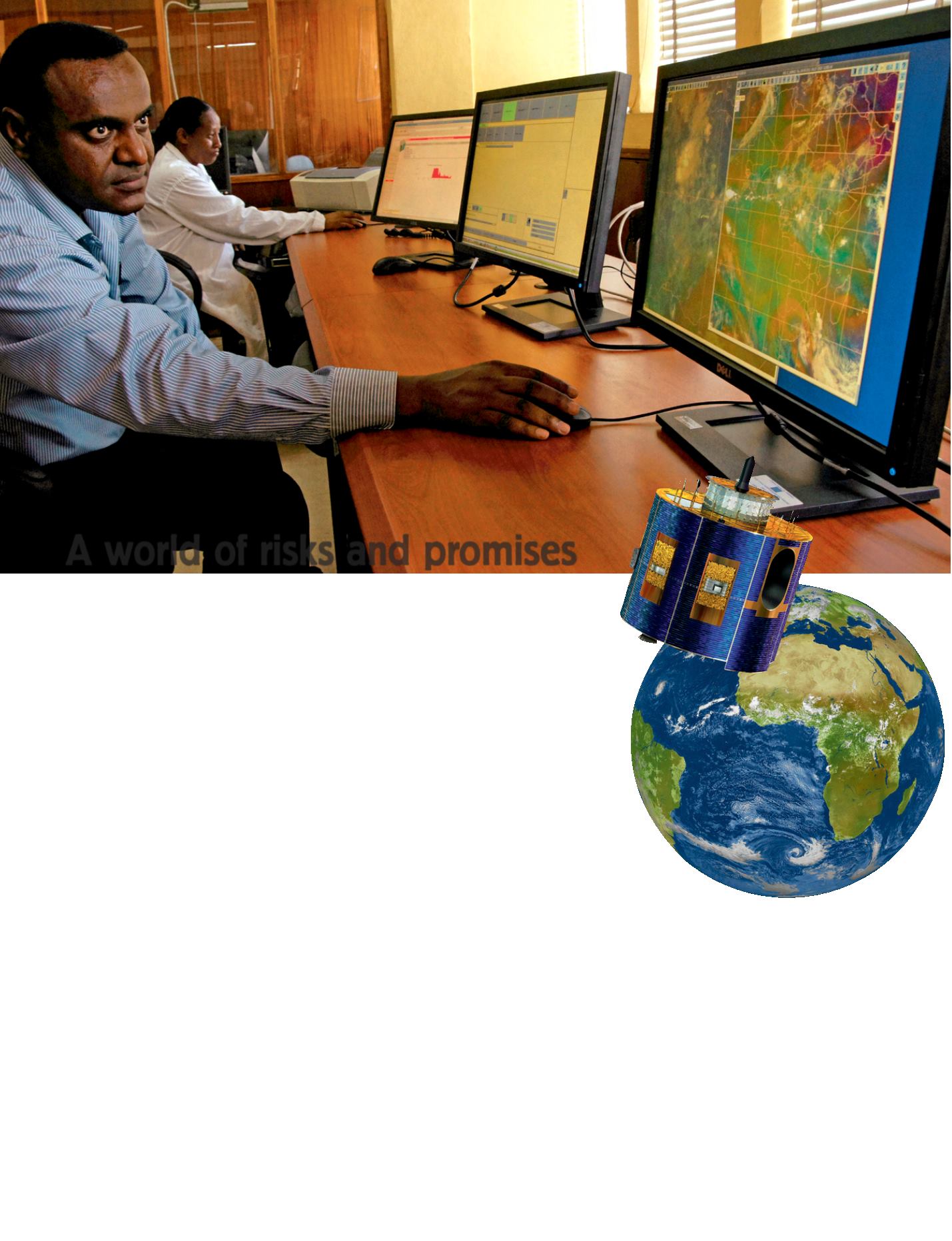
A
frica is a huge continent and
participates in global environmental
mon i tor i ng and economi c
development efforts. So Africa has to
accept to comply with international
agreements such as the implementation
of Agenda 21 on Sustainable Develop-
ment and the Millennium Development
goals. Sustainable Development is based
on three pillars—the environment,
social issues and the economy—and all
are concerned by risks.
Devastation by floods, earthquakes or
fires have impacts on the environment,
goods and services and lead to
destruction of social services such as
roads and schools. Drought affects
food security and livelihood in general;
drought and locusts invasions affect
crop production. To these we have
to add man-made disasters such as
deforestation, urbanization and land
degradation.
A lot of people are concerned by risks.
During the years 2000-2001, 35 million
people were affected by disasters
in Africa. Disasters or risks have
become an impediment for Sustainable
Development.
What should Africa do? It has to
address risks. If they are natural, you
cannot avoid them but you have to
reduce their impact on the economic,
social and environmental sectors.
How? First, you have to develop a risk
reduction strategy and integrate it into
development frameworks. To do so, you
must see what the areas are and where
the strategy should focus.This has to
come up with your policy; you need to
have the overall political commitment of
policymakers. Without it you cannot do
anything.
Strengthening institutions
The second objective is to improve the
governance of institutions dealing with
disasters or risk reduction issues. You
have to enhance their knowledge, to
assess and identify the kind of risks
and disasters and the total impact they
would have on the economy. Then you
must also try to integrate all that into
emergency response mechanisms.
Nowadays, countries have come up with
institutions at different levels. To some
extent, appropriate policies to address
risk reduction and development in
Africa have been initiated. However
these institutions have limitations:
some of them have low capacity; others
do not do their jobs properly. We need
to strengthen them at continental,
regional and national levels. This is
the challenge. But we do not need to
create new institutions to develop the
i
Mr Kassa (National Meteorology Agency in Addis Ababa, Ethiopia) is working with satellite receiving stations
providing meteorological information for short term forecasts.
© J.D Dallet/Suds-Concepts
A world of risks and promises
i
Artist’s view of a Meteosat Second Generation
(MSG). The European weather satellites operate in
geostationary orbit at 0° longitude over the West
coast of Africa.
© ESA-D. Ducros
92 - Sustainable Development in Africa & Satellites
92


